
We started this journey at the foot of the High Atlas Mountains on the fringe of the Sahara Desert and continued along the rugged terrains and valleys of Gorges Dades and Todgha Gorge to the ancient
Morocco is famous for its food, souks, ancient fortified citadels and kasbahs, beaches, mountains, its Berber people, and a lot more!
From the wide beaches and whitewashed fortified walls of Essaouira, we went past the fortress built by Vasco da Gama’s brother-in-law in the town of Safi, and then explored the ancient old city of El Jadida. We then travelled through several exciting destinations such as Casablanca, Rabat, Meknes, Moulay Idriss, Fes, Chefchaouen, Tétouan, and ended our journey in the northern coastal city of Tangier.
Here’s some of our best, and highly recommended, experiences along this Moroccan route.
1. Aït Benhaddou
Founded in 757 AD. by Ben Haddou who’s tomb is said to lie somewhere below the old city, the oldest structures of the “ksar” of Ait-Benhaddou date back to the early 17th century.
A UNESCO World Heritage Site, it was constructed as an Almoravid caravanserai and provided shelter to travellers along the trading routes which linked ancient Sudan to the souks of Morocco’s Marrakech. As the importance of the trading declined, it became the centre of local power.
Today a few families still live here, but more and more it is becoming nothing but an interesting tourist attraction.
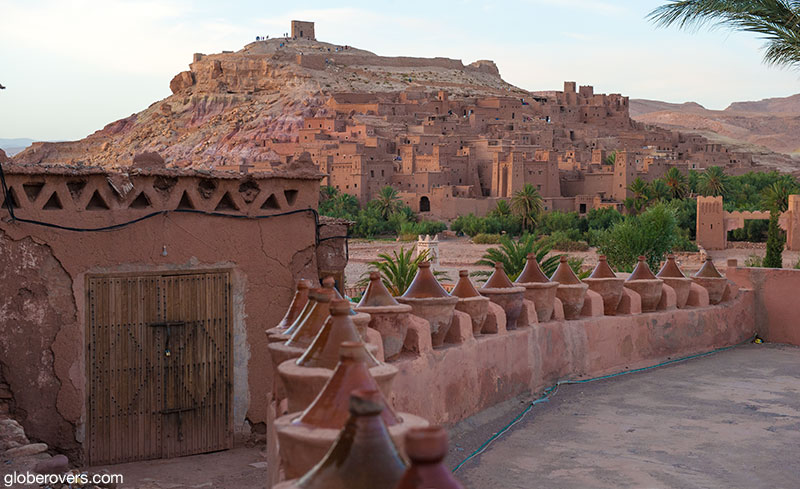
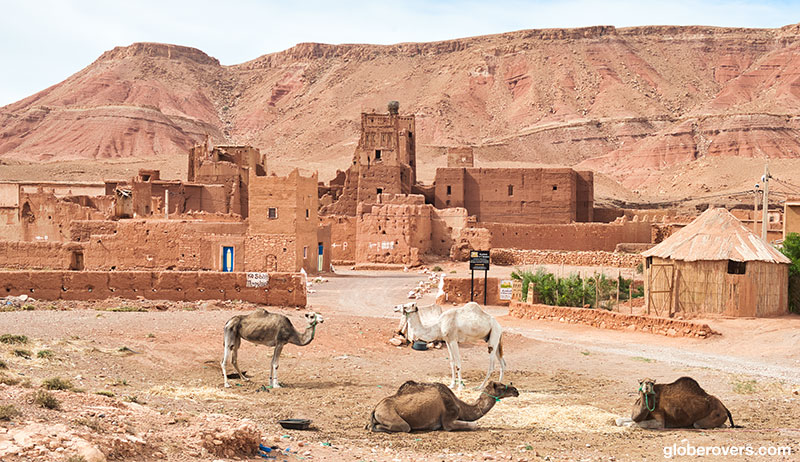
2. Gorges du Dadès & Gorges Todgha
Located in south-central Morocco, south of the High Atlas Mountains and north of the Small (or Anti) Atlas Mountains is the spectacular Gorges du Dadès, carved out over centuries by the Dadès Gorge River. Drive along “the road of a thousand kasbahs” and exit the gorge via the winding uphill road which is often listed among the scariest roads in the world.
A few kilometres to the east lies the equally spectacular Gorges du Todgha with its steep carved out cliff-sided canyons which, in some places, are just 10 metres wide with sheer, smooth rock walls over 160 metres high on either side. The canyon is popular among rock climbers, with more than 150 different climbing routes on 40 different sectors available to choose from. Alternatively enjoy hiking along the road and the small river to appreciate the natural surroundings.
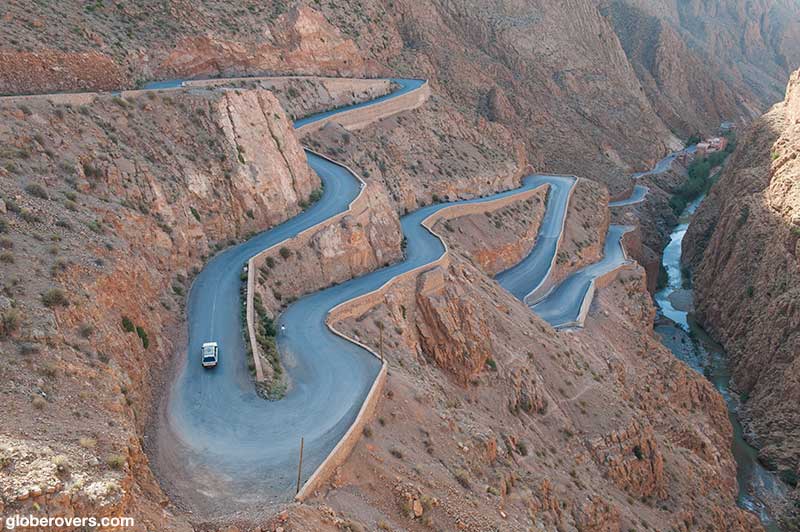
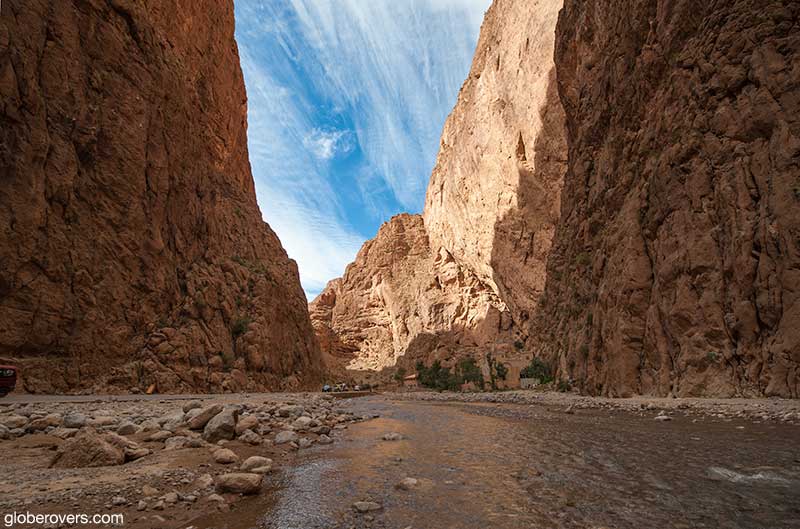
3. The High Atlas Mountains
The most prominent natural landscape in Morocco is the Atlas Mountains. The “High Atlas” mountains have more than 400 summits approaching 3,000 m in elevation. Some peaks are over 4,000 m high such as Toubkal (4,165 m), Ouanoukrim (4,089 m), and M’Goun (4,071 m)
Whenever you find yourself in the High Atlas, you will be mesmerized by its rugged beauty. One of the most scenic sections of these mountains is the drive from Tamtattouchte to Gorges du Dadès via the remote village of Agoudal. Some parts of this road are not for the faint-hearted, especially if you don’t have a 4×4 or off-road vehicle. Just keep your eyes on the road, and on the spectacular scenery, and you should get to your destination alive!


4. Chefchaouen, The Blue City
It’s the colour of powder-blue. A gorgeous, powdery blue that covers not only the houses of Chefchaouen but also government buildings, walkways, public squares and even lampposts and trash cans. The custom of painting everything in blue dates back to the 15th century when Jewish refugees fleeing the Spanish Inquisition settled here and continued their tradition of painting everything the colour of the heavenly skies. Other than the colour blue, there is plenty more to see, like the old kasbah, Grand Mosque, and the ancient city walls with its towers.


5. Fes and Marrakech
Fes and Marrakech are strong contenders for the title of “City with Most Tourist Arrivals”. Marrakech is famous for its large and bustling Djemaa El Fna square with monkey handlers and snake charmers, as well as its labyrinth medina with endless souks, museums, mosques, and madrasa.
Fes has all the above, excluding the large central square. In return, Fes has the largest, most colourful and most aromatic leather tanneries and stunning views over the bustling city from a nearby hill.


6. Volubilis – Ancient City Ruins
Volubilis, a UNESCO World Heritage Site, is a 3rd century BC partly excavated Berber and Roman city which was abandoned in the 11th century AD. While is it located in the modern-day Morocco, it is commonly considered to be the ancient capital of the kingdom of Mauretania which stretched across this region.
In the mid-18th century the city was devastated by an earthquake and then looted by Moroccan rulers to build the nearby city of Meknes. The triumphal arch has been well preserved.


7. Essaouira by the Sea
Known as the ‘Wind City of Africa’, Essaouira gets its fair share of local and international tourists during spring and autumn when they come to wander through the palm-lined avenues and fortified medina’s spice-scented lanes filled with beautiful Moroccan arts and crafts.
The medina has a large pedestrianised square, surrounded by many cosy bars and restaurants from where to follow the action. Essaouira is the heartland of Gnawa music and hosts an annual Gnawa music festival.

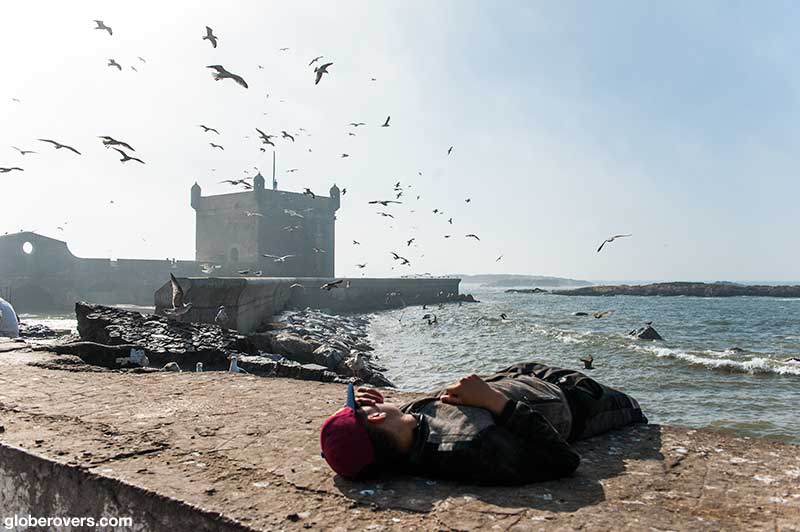
8. Moulay Idriss – Morocco’s Holy City
Moulay Idriss was the first Arab ruler and founder of the Idrisid dynasty, He arrived at the site in 789 and brought with him the religion of Islam.
Over the centuries, the city where Moulay Idriss was buried, became Morocco’s version of Mecca.
,The city’s holy status kept it closed to non-Muslims until 1912. Subsequently, non-Muslims could visit but were not allowed to overnight until 2005. Even nowadays some of the areas are off-limits to non-Muslims.


9. Tétouan – The White City
Tétouan is often described as the “jewel of the Rif Mountains”, yet it doesn’t get its fair share of tourists, which makes it an attractive alternative to other cities across Morocco.
The ancient medina, a UNESCO World Heritage Site, looks like it has not changed in many centuries. Painted white, it has a labyrinth of walkways, tunnels, and arches; truly a maze where you will easily lose yourself. Building styles are Hispano-Moorish, influenced by the Andalucia region in southern Spain.
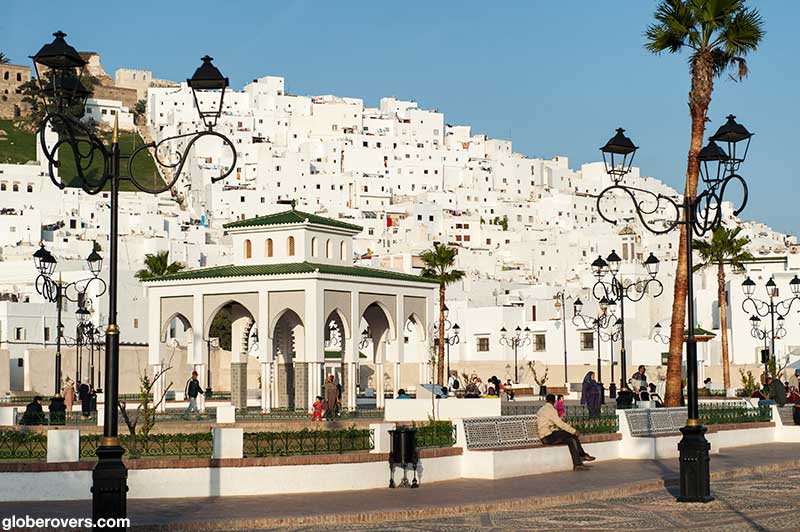




Blog post and photos by Peter who has been travelling almost full-time since 2005 and has been to over 122 countries. He visited several countries, such as Japan, more than 20 times. Peter is Editor-in-Chief and Publisher of GlobeRovers Magazine, an independent travel magazine focused on intrepid destinations.
